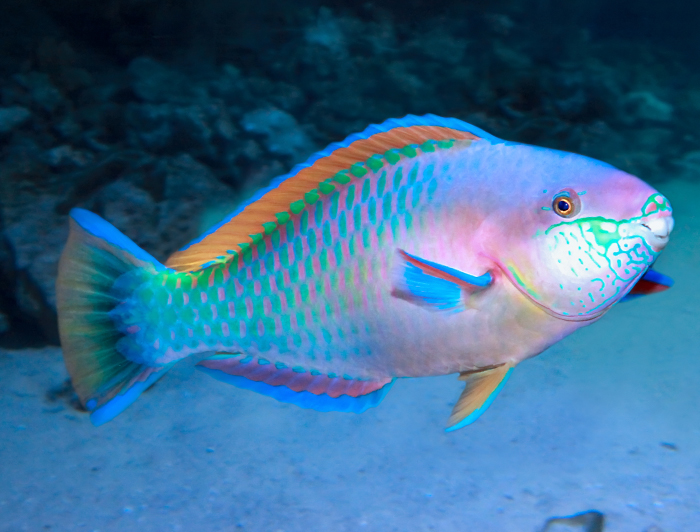Daisy Parrotfish
Daisy Parrotfish (Chlorurus sordidus)
The initial phase of displays a wide range of color variations. Smaller individuals can appear as a uniform dark brown to light gray, occasionally featuring a light band around a dark spot on the caudal peduncle. Larger specimens may exhibit irregular rows of small, light spots near the tail or possess the aforementioned light band. In the terminal phase, males can also show variability, often having a prominent tan area on their flanks or caudal peduncle, along with a rounded snout.
Daisy Parrotfish is a medium-sized fish, reaching a maximum length of up to 40 cm (16 in). This species is commonly found throughout the tropical waters of the Indo-Pacific region, including the Red Sea.
Before resting, Daisy Parrotfish secretes a mucus cocoon that envelops the fish. While the exact purpose of this cocoon remains unclear, one theory suggests it offers protection against parasitic gnathiids. Predators of this species include the honeycomb grouper and the coral trout, while its parasites include the monogenean.
Daisy Parrotfish is one of the most widely distributed parrotfish species and exhibits significant variability, with some regional forms potentially qualifying as subspecies. It inhabits both coral-rich and open pavement areas of shallow reef flats, lagoon reefs, seaward reefs, and drop-offs. Juveniles typically dwell in areas of coral rubble within reef flats and lagoons. Juveniles and females in their initial phase often form large groups that travel long distances between feeding grounds and their nighttime resting spots, primarily feeding on benthic algae. This species is a protogynous hermaphrodite, with sex change occurring when individuals reach a total length of 35.1 to 47.2 cm (13.8 to 18.6 in).
